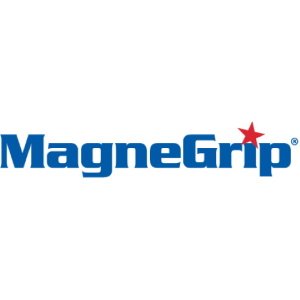MagneGrip Group - Experts & Thought Leaders
Latest MagneGrip Group news & announcements
The Dyersburg Fire Department in Tennessee is a full-paid agency with 50 sworn firefighters and three stations, providing EMS/Rescue coverage as well as primary fire response to a population of approximately 15,000 residents, with a 15.1 square mile service area which also encompasses part of an interstate, a regional airport, and a hospital. It is additionally an ISO Class 3 agency. As with many agencies across the country, Captain Rusty Hilliard says Dyersburg’s stations share common space between the apparatus bays and equipment storage. Primary fire response While it’s true that having both so close together could arguably make for a quicker response, it often comes down to a matter of limited room within the station house, especially for older stations built for much smaller vehicles than those used in modern firefighting. While it’s true that having both so close together could arguably make for a quicker response One side effect of this arrangement, however, is the fact that diesel engines tend to produce not only a lot of fumes but also the phenomenon known as ‘diesel dust,’ a black particulate residue composed mainly of carbon that seems to settle and accumulate on anything it touches. Capt. Hilliard says that for his department, that meant that sooty layers regularly accumulated on walls, bunker gear, SCBA equipment, and anything else in close proximity to the apparatus bays — including making its way, along with engine fumes, into crew living quarters nearby. Smoking-Free environment This problem was exacerbated by the constant egress and return of apparatus to and from calls, meaning that the engines were spending a fair amount of time running while within the bays’ relatively closed environment (even with the doors open, ventilation was not optimal to exhaust the fumes). In addition to the health concerns caused by having carbon dust and diesel fumes flying through the air at a given moment, these two problems were also causing the agency to have to spend a lot of time and money working on keeping their equipment clean and in working order. The final straw, however, came when the agency switched to a smoking-free environment in the quarters. Very shortly after cleaning the walls of the living quarters thoroughly, the crews noticed a not-insignificant buildup of diesel dust on the walls. Capt. Hilliard says this was the moment when the department knew it had to remedy the problem. Vehicle exhaust system Dyersburg settled on the MagneGrip/AirHAWK combination system from MagneGrip After looking through many of the options available on the market for exhaust handling and filtration, Dyersburg settled on the MagneGrip/AirHAWK combination system from MagneGrip, an ISO 9001:2008 certified company. The system combines an NFPA 1500-compliant vehicle exhaust system (MagneGrip) with a self-sealing nozzle, and a 4-stage filtration system (AirHAWK). The AirHAWK units are ETL/UL certified and utilize advanced filtration such as photocatalytic oxidation, which was developed by the Department of Defense to destroy toxic organic compounds. Since the MagneGrip and AirHAWK have many different models and configurations (for example, in how the exhaust hoses are mounted), MagneGrip came out on-site to Capt. Hilliard to determine which system was the best fit for each of their three stations, and then custom-designed the components to match the specific needs of each apparatus. Utilizing advanced filtration Almost instantly, Capt. Hilliard says the crews noticed that the smell of the exhaust was completely gone throughout the station. Maintenance time on cleaning the equipment, bays, and living quarters has drastically decreased Perhaps similar to going from a crowded city with a lot of cars to the countryside with far fewer, sometimes those who live with pollution don’t realize how much there is until it’s no longer present. Maintenance time on cleaning the equipment, bays, and living quarters has drastically decreased due to the removal of the diesel dust from the ambient air, and the crews have reported much better conditions in the quarters as well. Reducing equipment costs In this era of reduced budgets, Hilliard notes, departments have to be careful what they invest in. He credits Chief Robert Veal, Jr. with having the foresight to realize that purchasing the MagneGrip/AirHAWK system would actually help reduce equipment costs in the long run including maintenance and replacement costs for items contaminated by the exhaust output. More importantly, however, he realizes that the health, welfare, and job performance of firefighters depends on their ability to remain physically fit and ready, with fully functioning equipment. In these respects, Capt. Hilliard says the MagneGrip/AirHAWK system has performed exceptionally.
Diesel exhaust emissions can spread toxic gases and soot particles throughout a firehouse anytime a diesel-fueled engine is operated. When diesel fuel is burned, it produces polycyclic aromatic hydrocarbons and diesel soot. Both of these substances are classified as carcinogens. Ultrafine particulate can penetrate deep into the lung and is absorbed through the skin, carrying toxins into the bloodstream. Exposure to this type of pollution can increase the risk of developing cancer, and respiratory and cardiovascular diseases. Diesel exhaust emissions The World Health Organization’s classification of diesel exhaust emissions as ‘carcinogenic to humans,’ is hardly a surprise. Numerous studies have been coming to the same conclusion for several years. Medical studies point to firefighters’ higher rates for several cancers and other debilitating diseases than the general public for confirming evidence of this workplace hazard. Medical studies point to firefighters’ higher rates for several cancers and other debilitating diseases Studies also led the National Institute for Occupational Safety and Health (NIOSH) and the Environmental Protection Agency (EPA) to conclude that diesel exhaust most likely causes cancer. In addition, the National Fire Protection Agency (NFPA) in its 1500 standard ‘advocates the need for the elimination and containment of all vehicle exhaust emissions to a level of no less that 100% effective capture.’ Exhaust removal systems Several types of exhaust removal systems are marketed to fire services. Many of them are inadequate because they remove only a portion of the toxic contaminants. Those solutions that consist of fans and air vents do very little to reduce exposure to hazardous toxins. Likewise, filtration systems mounted above vehicles obviously do not capture all the exhaust emissions and some of the harmful gases and particulates are able to spread throughout the firehouse. The international mechanical code for new construction specifically states: “Areas in which stationary motor vehicles are operated shall be provided with a source capture system that connects directly to the motor vehicle exhaust system.” Under-body devices that replace a vehicle’s muffler, are inadequate because they only ‘filter’—and do not ‘eliminate’—the exhaust emissions. Such attachments filter out some of the solid substances, but not the gaseous toxins released into the air. Muffler replacement equipment Significantly more fine particles are produced with newer diesel engines These devices may reduce the appearance of smoke, but the harmful gases in diesel exhaust such as CO (carbon monoxide), VOCs (volatile organic compounds), and HC (hydrocarbon) are invisible . . . but deadly. In addition, muffler replacement equipment requires frequent and costly filter cleaning or replacement. The Diesel Particulate Filter (DPF), which is required on newer model apparatus, removes large particulate but not sub-micron particulate or gaseous substance. And significantly more fine particles are produced with newer diesel engines. Exhaust removal design In the market, only a few manufacturers can make valid claims for removing exhaust emissions from the firehouse. However, not all of these systems are created equal. Some are complicated in design and not user-friendly, and some require extra attachments and equipment to operate. Only a few manufacturers can make valid claims for removing exhaust emissions from the firehouse What makes better technology? - One of the most important innovations in exhaust removal design was developed by MagneGrip Group to eliminate problems with traditional exhaust removal systems. Its patented universal nozzle uses rare-earth magnet assemblies to support the nozzle’s connection to the apparatus tailpipe. This design eliminates the need for compressors, air lines, gauges, safety disconnect components, and electrical system support. Providing cooler nozzle This makes the system safer and easier to use than any other source-capture system. It also requires the least maintenance of any system. MagneGrip offers the only no-leak sealed system that allows outside air to enter the nozzle chamber. A one-way check valve enables air to enter, but seals against exhaust fume backwash. Outside air mixing with the exhaust provides cooler nozzle and hose operation and less wear. It also reduces negative air pressure on the apparatus turbocharger when the engine is not running and avoids damage from the turbocharger spinning without lubrication. Operation is fully automatic and does not reduce response time. On emergency runs, the nozzle remains attached until the apparatus tailpipe reaches the doorway; then it automatically releases. The nozzle disconnects easily and smoothly, and a cable gently retracts the hose and nozzle away from the exit. Emergency response vehicles MagneGrip has more exhaust removal solutions than any other company MagneGrip systems have been proven in thousands of installations nationwide. They are the first choice of U.S. fire departments. This acceptance affirms the reliability of MagneGrip’s service and its systems’ components, which are built to provide many years of dependable service. MagneGrip has more exhaust removal solutions than any other company. Since buildings, apparatus configurations, and operations vary, it is important to have the right system to meet the specific needs of every firehouse. MagneGrip systems include: Sliding Flexhose Track (SFT) System – A compact system that works well in firehouses with back-in bays that have low ceilings or narrow spaces between vehicles. Only 16-21 inch aisles are needed. This streamlined system has no hanging hose loops. Sliding Balancer Track (SBT) System – A good choice for drive-thru bays, providing door-to-door exhaust capture. The system can be installed in each bay for one vehicle or two vehicles parked in tandem, and it connects to emergency or non-emergency vehicles. Straight Suction Rail (SSR) System – This system is ideal for firehouses with little room to spare. It accommodates up to four emergency response vehicles parked in tandem. The SSR system uses the MagneGrip nozzle and minimum hose lengths. Vertical Stack Rail (VSR) System – Designed for vehicles with a vertical exhaust stack. No manual connection is required. When the apparatus returns from a run and enters the station, the stack catcher automatically adjusts to align the suction rail with the exhaust stack. Simple Drop System – It has the same components as the SBT system, without the track. On emergency runs, the nozzle remains connected until the hose and cable are fully extended and then it automatically releases. An economical option for vehicles that may be started daily, but are not used regularly for emergency runs. Capturing exhaust particulates MagneGrip continues to innovate and bring new design enhancements to its exhaust removal systems: Wireless Transmitters are used to automatically start the exhaust fan before the engine starts and prior to the apparatus reentering the facility. This eliminates the escape of exhaust fume in the building. MagneGrip exhaust fans are designed solely for exhaust removal. Spark-resistant, curved blades deliver the highest efficiency, and the fans run quieter than conventional fans. The die-stamped Lifting Elbow on MagneGrip systems eliminates hose pinch, twisting, and sliding that occurs with old-style rubber saddles. From the lifting elbow to the nozzle, a support cable inside the hose bears the weight to eliminate hose stretching. It also ensures easy release of the nozzle. The lower two feet of the MagneGrip hose is 5-ply thickness for rugged durability. An attached handle makes connecting the system effortless from a standing position. MagneGrip offers an inline particulate filter, which can be positioned in the system’s ductwork, to capture exhaust particulates so they are not expelled into the air outside. Providing guaranteed satisfaction MagneGrip has led the exhaust removal industry with major advances in technology and design For more than 15 years, MagneGrip has led the exhaust removal industry with major advances in technology and design. And, MagneGrip systems are professionally installed by a nationwide team of service technicians to provide guaranteed satisfaction. MagneGrip exhaust removal systems are completely (100 percent) manufactured in the U.S.A. Firefighters and EMTs can take pride in having a system that is ‘All American,’ as well as the safest, most efficient system available. Competitive systems are often the products of foreign companies, which are largely manufactured outside the U.S. MagneGrip uses American Standard parts (not metric), so if any adjustment or repairs are needed, most departments will already have the tools on hand. A full-color brochure and a video DVD demonstrating the advantages of MagneGrip systems are available.
Monroe Fire Department in Monroe, Ohio has taken a proactive approach towards cancer prevention and ensuring the health and safety of their firefighters. A top priority in achieving that goal was the installation of a MagneGrip Exhaust Removal System, at the fire department’s facility. Working with Monroe Fire Department’s Assistant Chief, Dave Leverage, MagneGrip installed an exhaust removal system. The MagneGrip Exhaust Removal System removes diesel exhaust emissions in firehouses, so as to reduce firefighter risk for cancer, respiratory and cardiovascular diseases. MagneGrip Exhaust Removal System The patented magnetic nozzle provides an airtight seal and is 100% effective in removing exhaust emissions. The exhaust removal system also features wireless auto-start activation. MagneGrip’s 1,000°F rated hose is now standard equipment. Assistant Chief for the Monroe Fire Department, Dave Leverage acknowledged the importance of exhaust removal in the health and safety of Monroe Fire Department’s firefighters and the ease of working with MagneGrip to install an effective and efficient system to reduce first responders' cancer risk.
The New Future For Fire Agencies
DownloadThe Eight Key Trends in Fire Detection in 2023
DownloadA Digital Platform to Improve Fire Safety Compliance and Inspections
DownloadOvercoming the Challenges of Fire Safety in the Paper Industry
DownloadCarbon Monoxide: Creeping Killer Caught In The Act
Download










